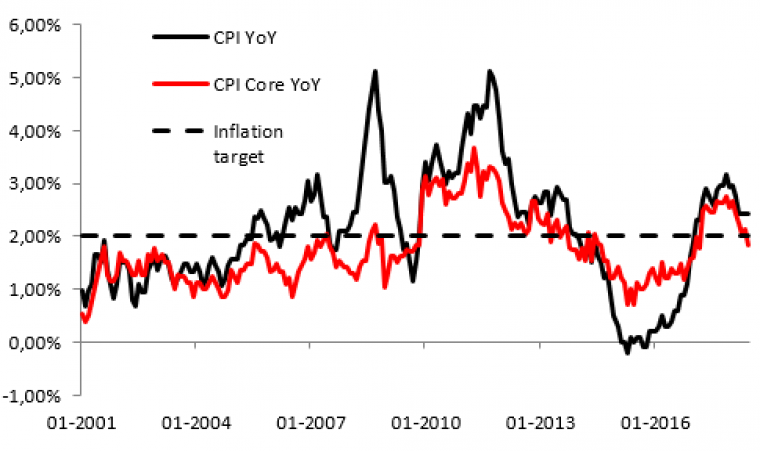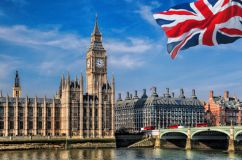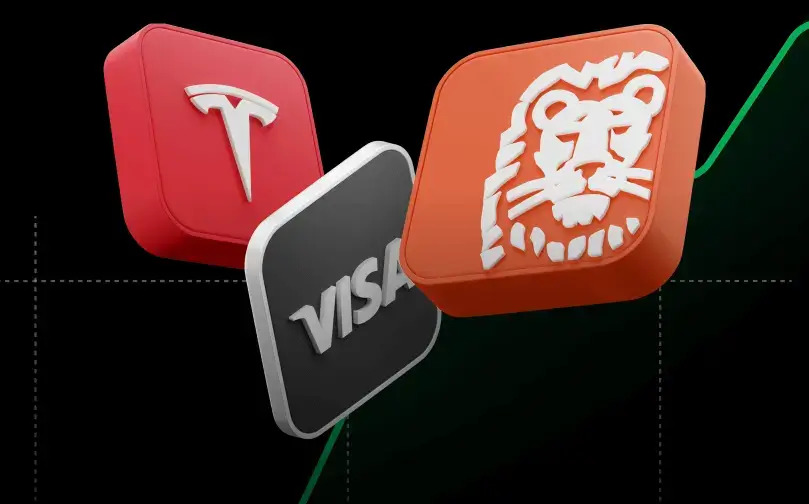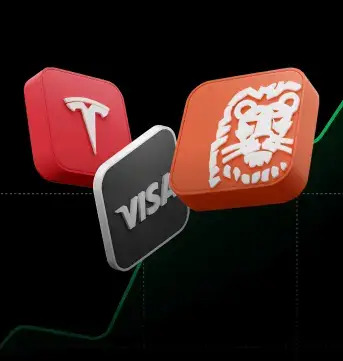Summary:
- UK inflation unexpectedly stays flat in June undercutting slightly odds for a rate hike next month
- Clothing and footwear prices were the prime reason behind a disappointing release
- GBP marches lower breaching its crucial support
Approximately two weeks ahead of the Bank of England monetary policy meeting GBP traders were offered the flat print of price growth in the UK economy in June. The reading has already undercut odds for a rate increase in August, and allowed the quid to extend this week’s drop. As of 9:55 am BST the British pound is the weakest major currency losing 0.6% against the US dollar which, in turn, keeps pushing higher today.

UK core price growth slipped in June below 2% for the first time since March 2017. Source: Macrobond, XTB Research
According to the ONS UK headline inflation held at 2.4% in annual terms in the past month falling short of the median estimate indicating at a rise to 2.6%. Concurrently, core price growth unexpectedly eased to 1.9% from 2.1% while no change had been anticipated. Looking for reasons behind quite a disappointing reading one may single out clothing and footwear prices which declined 2.1% in a month-on-month basis bringing the biggest such a drop since 2012. The ONS explained this fall was caused by "a greater incidence of discounting". Recreation as well as food and non-alcohol beverage prices also subtracted from the monthly reading. On the flip side, falling prices in the above-mentioned categories were, in part, offset by higher price pressure in transportation and communication which perfectly explains us why core price growth moved below a 2% threshold. Electricity and gas prices did also contribute to higher price growth after suppliers such as British Gas, EDF as well as Scottish Power increased their tariffs in response to higher wholesale costs.
As far as PPI growth is concerned, the data unveiled constantly mounting costs pressure on companies as PPI input price growth keeps rising well above the level of PPI output price growth. The spread inched higher in June to 7.1% from 6.6% climbing the highest since May 2017. This aspect together with rising labour costs may be a bellwether of higher prices ahead, but these are just conjectures on which market participants do not pay too much attention at this time. Either way, market participant do not seem to share the view that this one-off disappointment could be sufficient to derail a rate rise in the following month as the likelihood has moved just moderately down and stayed in the vicinity of 80%.

After the release the pound lost ground, but it’s managed to extend this decline after striking 1.3050. Nevertheless, there is no doubt that this level is at stake right now, and its possible breakdown could bear much more pain for GBP bulls. Under these circumstances one cannot rule out a fall toward 1.2720 or so. Source: xStation5
Disclaimer
This article is provided for general information purposes only. Any opinions, analyses, prices or other content is provided for educational purposes and does not constitute investment advice or a recommendation. Any research has not been prepared in accordance with legal requirements designed to promote the independence of investment research and as such is considered to be a marketing communication. Any information provided does not have regard to the specific investment objectives, financial situation and needs of any specific person who may receive it.
Past performance is not necessarily indicative of future results, and any person acting on this information does so entirely at their own risk, we do not accept liability for any loss or damage, including without limitation, any loss of profit, which may arise directly or indirectly from the use of or reliance on such information.


